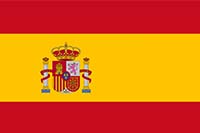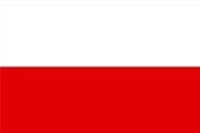Electric bikes are becoming more prevalent on our streets and off-road trails. Their convenience, efficiency, and entertainment value make them one of the world's fastest-growing modes of private transport. There are significant differences between various models, such as front-wheel and rear-wheel drive. Both have pros and cons, but what is the difference between front-wheel drive and rear-wheel drive ebikes, and do they matter?

In this article, we'll explain the differences between front-wheel-drive and rear-wheel-drive ebikes so you can make an informed purchasing decision.
How They Work
Front-Wheel Drive Ebikes
Front-wheel drive ebikes have their motor mounted in the front wheel hub. The hub is the center of the wheel that attaches to your bike's fork. As the motor is located in the front wheel, it is not directly connected to the drivetrain, so it is incredibly simple and often a popular aftermarket upgrade for amateur DIY bike mechanics.
You activate the motor via a throttle lever or button on the handlebars. This means you can use the motor to help you when pedaling or just use it to pull you along when you want to rest your legs.
Rear-Wheel Drive EBikes
Rear-wheel drive ebikes have their motors in the rear wheel hub, which is the part that the axle goes through. Therefore, the motor pushes the bike rather than pulls it when the rider pedals or activates it via a throttle. Rear-wheel drive ebikes give you a more natural feeling when riding, as they give you a similar sensation to riding a regular bike.
Pros and Cons of Front-Wheel Drive Ebikes
Pros
Kits Are Easy To Install
Front-wheel drive electric bike kits are designed with simplicity in mind. All you need to do is replace the front wheel with the kit's replacement, which has the motor already mounted within its hub. You must also mount the controller on your handlebars and the battery somewhere on your bike's frame.
Fitting one of these kits is easy and can be done by most people with basic tools. These kits are incredibly simple, as you don't need to modify your bike's drivetrain. However, you may need to upgrade the brakes, as the existing ones may not be sufficient to cope with the extra weight and power.
Cost-Effective
The simplicity of front-wheel drive ebikes, either factory-fitted or with aftermarket kits, makes them the cheaper option. Riding a front-wheel drive ebike is a cheap way to get into the electric bike scene.
Cons
Compromised Handling
With the motor in the front wheel, you'll notice a significant imbalance with more weight at the front. The result is heavier steering and reduced responsiveness, especially when riding at higher speeds or negotiating tricky sharp turns. In addition to this, the sensation of being pulled along can feel unnatural and unsettling for some riders.
Front Fork Stress
If you fit an aftermarket front wheel drive kit to your traditional bike, you must ensure the fork is robust enough. Older bikes may have forks too weak to cope with the extra weight and stresses caused by the motor. Over time, these stresses can damage and wear the fork, causing it to be unsafe. Therefore, you may need to upgrade your fork at an extra cost.
Potentially Dangerous When Climbing Steep Hills
A front-wheel-drive ebike can suffer from reduced grip when climbing steep hills. As the motor pulls from the front, all the weight shifts to the back of the bike, potentially lifting the front wheel off the ground. This can cause wheelspin and loss of control, especially if the surface is loose.

Pros and Cons of Rear-Wheel Drive Ebikes
Pros
Great Traction
When compared to front-wheel drive ebikes, rear-wheel drive ebikes have more traction. The rear wheel has more weight due to the rider's position, which improves grip, especially when climbing steep hills or riding on loose surfaces.
A More Natural Riding Sensation
As the power goes to the rear wheel, the sensation of riding is closer to a traditional bike. This means riding a rear-wheel drive electric bike is more intuitive. Additionally, the familiarity continues through the bike's handling characteristics, providing precise steering and making it easier to weave around pedestrians and obstacles.
Higher Efficiency
The rear-mounted motor is connected directly to the drivetrain, so it is more efficient in terms of battery usage than a front-wheel-drive ebike. Thanks to its superior range, you can ride further on a single charge, reducing the frequency of recharging. Therefore, rear-wheel-drive electric bikes are better for those with long commutes or who want to explore further.
Better Stability Under Braking
The improved weight distribution of a rear-wheel-drive ebike makes it more stable under braking. This is because the front wheel is less likely to lock and skid when you brake hard, a common problem with front-wheel-drive ebikes.
Cons
Higher Cost
Unfortunately, rear wheel drive e-bikes are more expensive than those with motors at the front. The extra cost comes from the additional engineering to integrate the motor into the drivetrain. However, it's worth noting that although these ebikes are more expensive, they are superior.
A Little More Effort To Maintain
Due to the more advanced design of rear-wheel drive ebike, they require more maintenance. There's not much more to it, but you need to regularly check the sensors to see if they are dirty or loose. You must also take care of your ebike's drivetrain as the extra forces can wear the components out more quickly if not maintained.

Why Rear-Wheel Drive is the Best Option
While both motor configurations have pros and cons, the rear-wheel drive setup provides the best riding and ownership experiences. Riders of rear-wheel-drive ebikes prefer their enhanced traction, balanced weight distribution, and efficiency over front-wheel-drive ebikes. Also, the more intuitive ride characteristics make rear-wheel-drive ebikes safer and more fun, especially in the early days of ownership.
A great example of a quality rear-wheel-drive ebike is the Fiido C11. This electric city bike has a motor that engages when you pedal or activate the throttle. Powered by a 500wh battery, you can expect 90km of assisted pedaling or a 55km range using the throttle. It is a stylish and very capable electric bike, ideal for urban commutes and running errands.













